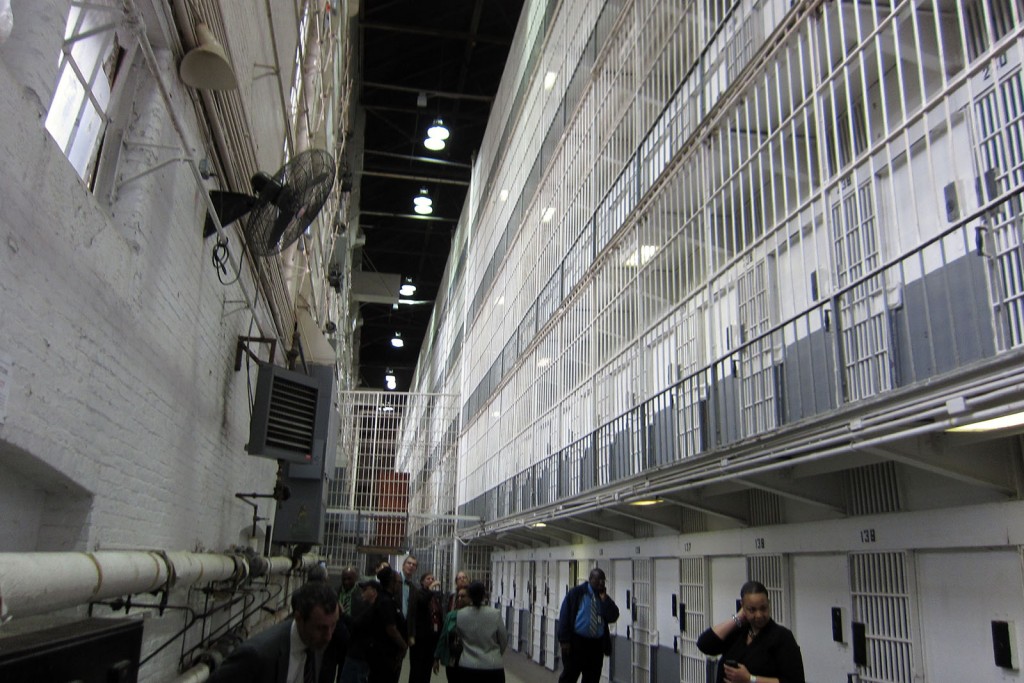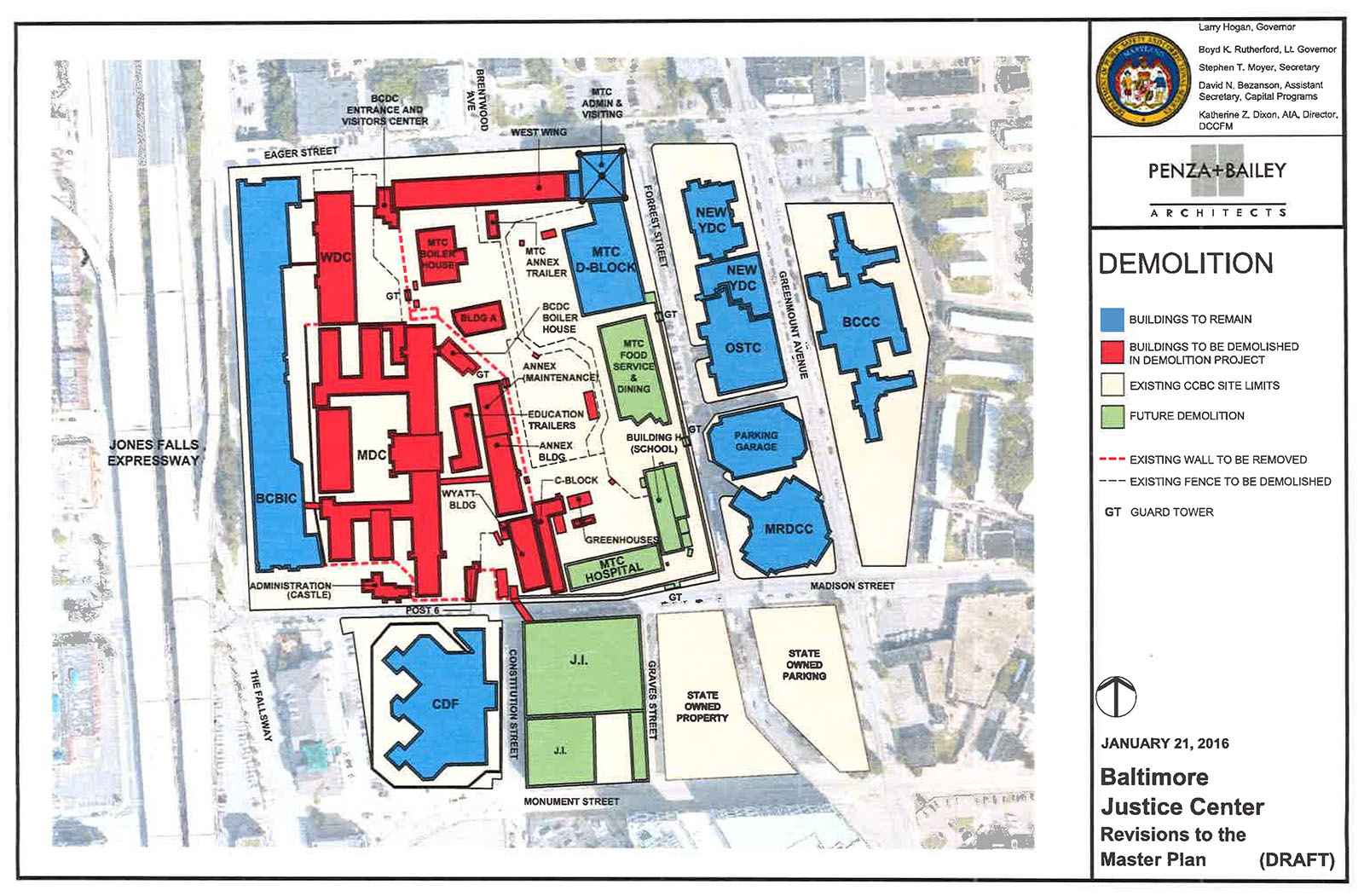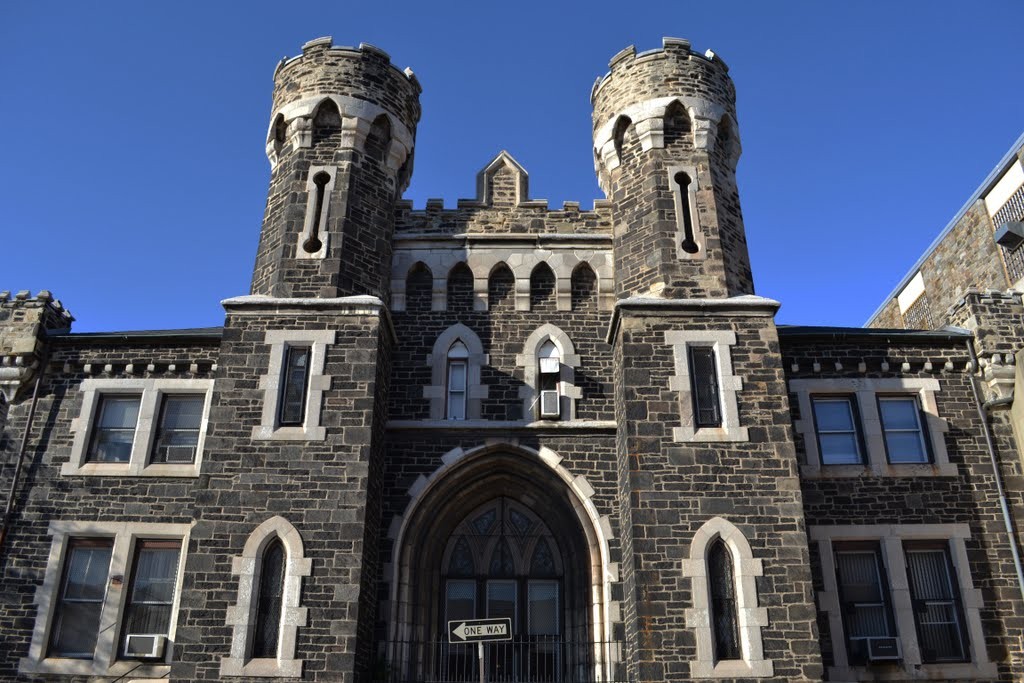Last month, the Maryland Department of Corrections (MDC) released their preliminary plan for the demolition of the Baltimore City Detention Center. Governor Larry Hogan announced the immediate closure Baltimore jail last July following years of concerns and controversy over conditions for inmates and corrections officers. MDC is now seeking to tear down several significant historic buildings including the 157-year-old Warden’s House and the west wing of the iconic Maryland Penitentiary whose turrets have stood out in the Baltimore skyline since the early 1890s. If the Maryland General Assembly funds the project, estimated to cost $482 million, MDC hopes to start design work in July 2016 and start demolition in March 2017.

We recognize the urgent need to fix the long-standing issues at the facility but we believe both the Warden’s House and Maryland Penitentiary building can be reused by the Maryland Department of Corrections or partner organizations. Baltimore Heritage is opposed to the current plan to tear down these significant buildings and we are committed to seeking alternatives to demolition.

The Baltimore Jail is a complex of buildings occupying the block between Madison and Eager Streets just east of the Jones Falls Expressway. In addition to the Warden’s House on East Madison Street and the west wing of the Maryland Penitentiary on East Eager Street, the demolition proposal also includes tearing down the Men and Women’s Detention Center Buildings completed in 1967, and a historic laundry, school, and power plant all dating back to the 19th century.
Warden’s House (1855-1859)

Known to many simply as the “Castle”, the Warden’s House won recognition for its unique Gothic design when it was designated a Baltimore City landmark in 1986. Despite the designation, state agencies like the Maryland Department of Corrections are not bound by local protections for landmark structures. Noted as the work of local architects James and Thomas Dixon, the Warden’s House is perhaps even more important as a reminder of Baltimore’s antebellum history of slavery.
From 1859 to 1864, the Baltimore Jail was used to hold hundreds of “runaways” along with Marylanders, both white and black, who assisted enslaved people as they fled to freedom. At the time, a number of private slave jails operated around the Baltimore Harbor but none of those buildings have survived through the present. Today, the Warden’s House is a rare physical reminder of how the slave trade and resistance to slavery dominated Baltimore’s civic life.
Maryland Penitentiary (1897)
The Maryland Penitentiary on Eager Street is remarkable in other ways. Completed in 1897, as part of a prison reform building boom, the building was designed by architect Jackson C. Gott. Gott served as one of eight founding members of Baltimore’s chapter of the American Institute of Architects in 1870. He designed the Masonic Temple and Eastern Pumping Station in Baltimore, as well as Western Maryland College (now McDaniel College) in Westminster. For the Penitentiary, Gott’s Romanesque Revival design and his choice of heavy Port Deposit granite created a landmark whose appearance truly reflects its somber purpose.
MDC cited structural concerns in their proposal to demolish the west wing of this structure but, based on our recent site tour, the issues only affect the interior metal structure that makes up the cells. State officials acknowledged that they have not seen any structural issues with the exterior stone walls.

What happens next?
State law requires the Maryland Department of Corrections to participate in a preservation review process administered by the Maryland Historical Trust. Baltimore Heritage, along with Preservation Maryland, is working through the review process to seek a revised proposal that preserves these important landmarks. We want to hear your comments, questions and concerns. Please get in touch or sign up below for updates as we continue work on this issue throughout the year.
[gravityform id=”25″ title=”true” description=”false”]


